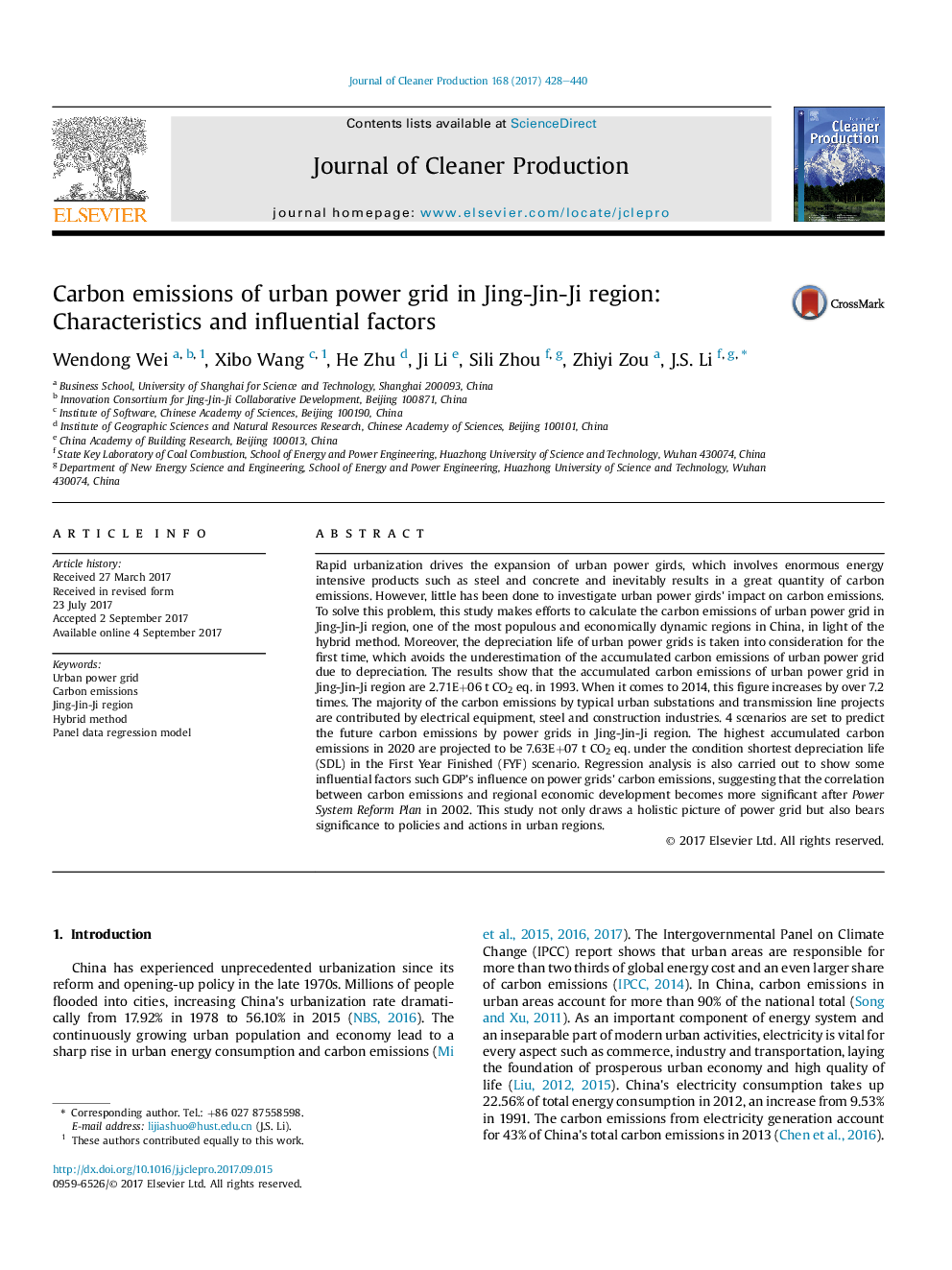| Article ID | Journal | Published Year | Pages | File Type |
|---|---|---|---|---|
| 5479814 | Journal of Cleaner Production | 2017 | 13 Pages |
Abstract
Rapid urbanization drives the expansion of urban power girds, which involves enormous energy intensive products such as steel and concrete and inevitably results in a great quantity of carbon emissions. However, little has been done to investigate urban power girds' impact on carbon emissions. To solve this problem, this study makes efforts to calculate the carbon emissions of urban power grid in Jing-Jin-Ji region, one of the most populous and economically dynamic regions in China, in light of the hybrid method. Moreover, the depreciation life of urban power grids is taken into consideration for the first time, which avoids the underestimation of the accumulated carbon emissions of urban power grid due to depreciation. The results show that the accumulated carbon emissions of urban power grid in Jing-Jin-Ji region are 2.71E+06Â t CO2 eq. in 1993. When it comes to 2014, this figure increases by over 7.2 times. The majority of the carbon emissions by typical urban substations and transmission line projects are contributed by electrical equipment, steel and construction industries. 4 scenarios are set to predict the future carbon emissions by power grids in Jing-Jin-Ji region. The highest accumulated carbon emissions in 2020 are projected to be 7.63E+07Â t CO2 eq. under the condition shortest depreciation life (SDL) in the First Year Finished (FYF) scenario. Regression analysis is also carried out to show some influential factors such GDP's influence on power grids' carbon emissions, suggesting that the correlation between carbon emissions and regional economic development becomes more significant after Power System Reform Plan in 2002. This study not only draws a holistic picture of power grid but also bears significance to policies and actions in urban regions.
Related Topics
Physical Sciences and Engineering
Energy
Renewable Energy, Sustainability and the Environment
Authors
Wendong Wei, Xibo Wang, He Zhu, Ji Li, Sili Zhou, Zhiyi Zou, J.S. Li,
